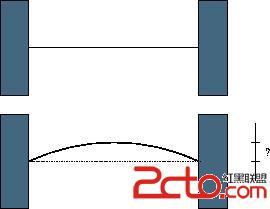Description
 When a thin rod of length L is heated n degrees, it expands to a new length L"=(1+n*C)*L, where C is the coefficient of heat expansion.
When a thin rod of length L is heated n degrees, it expands to a new length L"=(1+n*C)*L, where C is the coefficient of heat expansion. Input
The input contains multiple lines. Each line of input contains three non-negative numbers: the initial lenth of the rod in millimeters, the temperature change in degrees and the coefficient of heat expansion of the material. Input data guarantee that no rod expands by more than one half of its original length. The last line of input contains three negative numbers and it should not be processed.Output
For each line of input, output one line with the displacement of the center of the rod in millimeters with 3 digits of precision.Sample Input
1000 100 0.0001 15000 10 0.00006 10 0 0.001 -1 -1 -1
Sample Output
61.329 225.020 0.000
Source
Waterloo local 2004.06.12
AC代碼:
#include#include #include using namespace std; int main(){ double l,n,c; while(scanf("%lf%lf%lf",&l,&n,&c)!=EOF){ if(l==-1 && n==-1 && c==-1) break; double low,mid,high,L; L=(1+n*c)*l; low=0.0; high=l/2; while(high-low>1.0e-5){ mid=(high+low)/2; double r=(mid*mid+l*l/4)/(2*mid); double L1=2*r*asin(l/2/r); if(L1<=L) low=mid; else high=mid; } printf("%.3lf\n",mid); } return 0; }